
Here at HubSpot, we've been giving a lot of thought to the concept of a growth stack -- the set of tools that marketers and sales teams use to drive growth. As you might imagine, we're working to build our products to serve as a strong foundation for your growth stack. But what does that look like?
To dig deeper into what the typical growth stack looks like, we recently partnered with Datanyze, a platform that can track a large number of technology categories. Together, we set out to determine what technologies HubSpot customers have enabled on their websites.
In this post, we'll break down our customer adoption, and show which of the more notable technologies are being used.
7 Key Technologies Used by HubSpot Customers
1) General Technologies
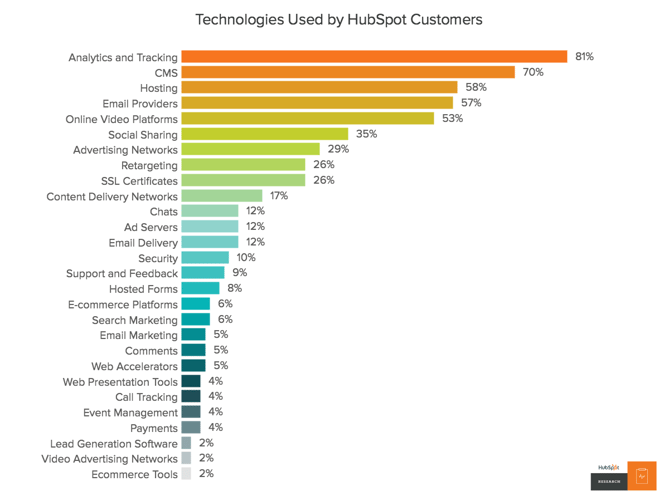
Among HubSpot customers, we saw a widespread adoption of technologies that, when it comes to marketing and sales, are pretty standard -- things like analytics, email, social sharing, and CMS, to name a few.
2) Analytics Technologies
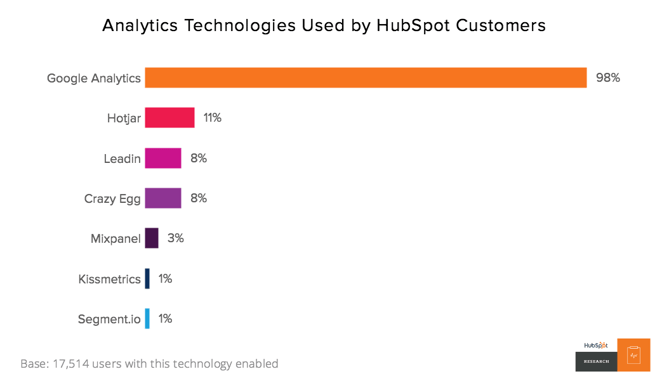
Under the analytics category, we can see that Google dominates the market, with 98% of all HubSpot customers leveraging Google Analytics -- that's great market share.
What we found to be even more interesting was the supplementary set of tools that our customers use to enhance and disseminate their content, which follow below.
(Note: The Leadin product has since been rolled into HubSpot Marketing Free.)
3) Video Platforms
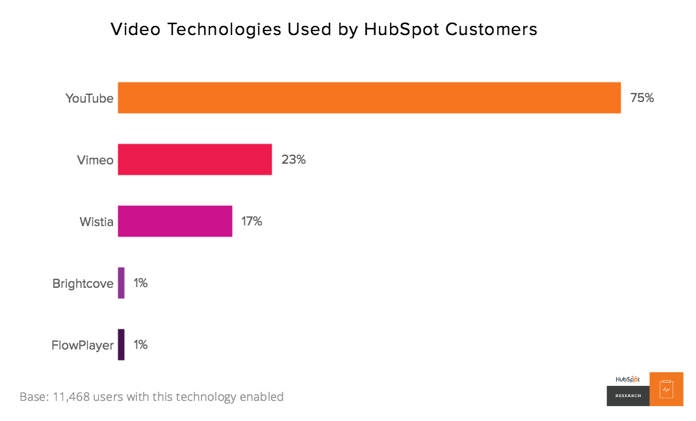
Over half of our customers -- 53% -- have an online video platform enabled on their websites. We've seen from previous research that video is very popular among consumers, and demand for video-based content continues to grow. Video adoption by our customers indicates a recognition of that demand -- They're keeping up with changing content preferences.
The top-used video platform -- by wide margin -- is YouTube, followed by Vimeo and Wistia. Note: Many websites use multiple tools.
4) Ad Networks and Retargeting
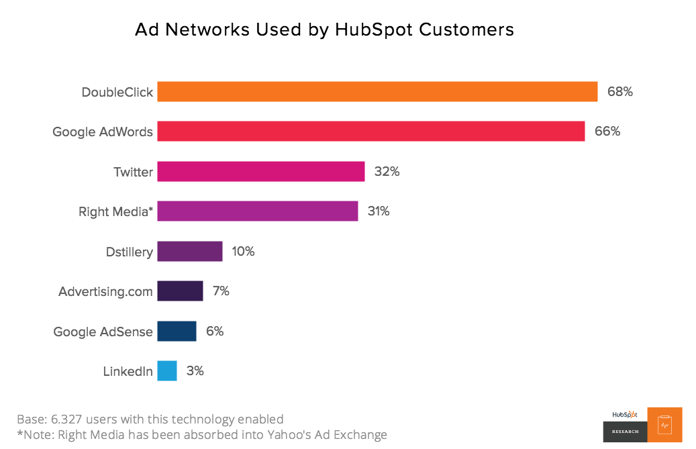
A good number of customers -- 29% -- are also leveraging ad networks, and 26% are retargeting to reach a wider audience. True to our inbound philosophy, our customers are focusing mostly on unobtrusive search ads and social media ads.
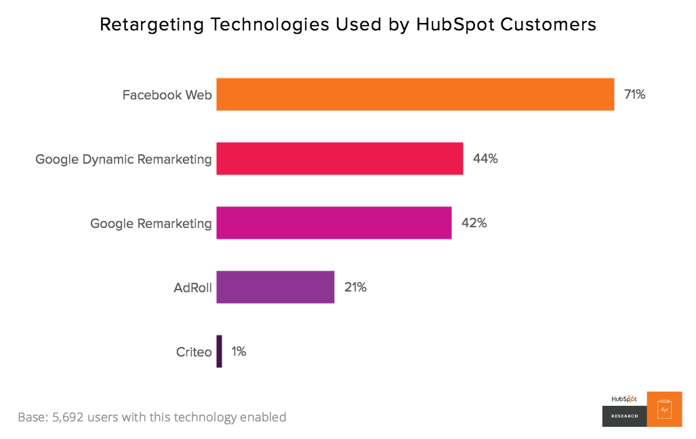
Retargeting, meanwhile, allows our customers to re-engage with prospects who may have left items in a shopping cart, or viewed specific webpages. For those efforts, 71% of customers use Facebook, with Google Remarketing and Dynamic Remarketing rounding out the top three tools.
5) Support and Chat Technologies
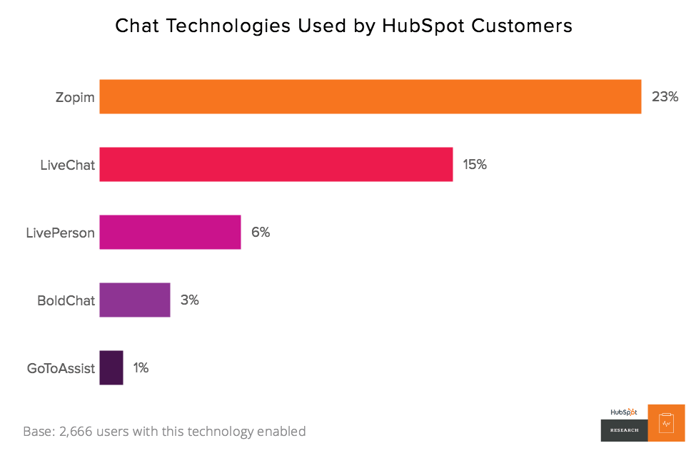
To better serve customers and prospects, about one out of five of the websites we examined enable support and chat tools, in order to directly communicate with website visitors. There's no obvious leader in the chat tooling space, with the majority of websites using lesser-known chat tools. In our sample, Zopim and LiveChat were the chat leaders.
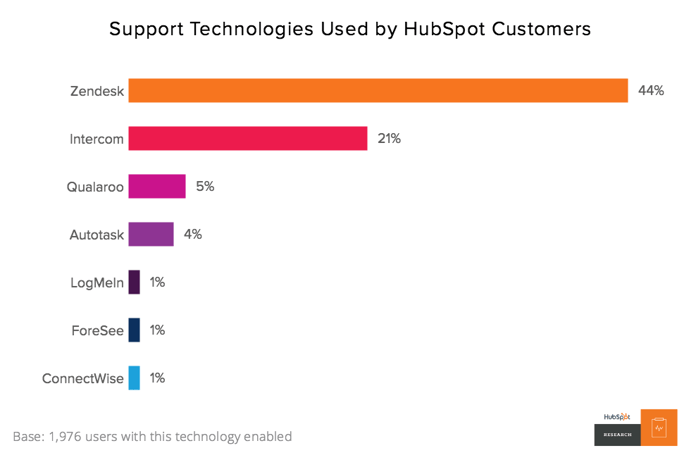
We saw a more clear-cut leader in the support tool space, with 44% of customers using support technologies opting for Zendesk. As more customers expect on-demand service, businesses who hoping to leverage superior service as a differentiator will continue to invest in both support and chat technologies.
6) Payment and Ecommerce Tools

The last technologies crucial to growth are ecommerce and payment tools. Obviously, businesses and buyers alike always welcome a seamless way to collect payment.
Overall, payments and ecommerce show relatively low adoption, with just 4% and 2% of websites using each respective technologies.
For websites with payment collection capabilities, 33% use PayPal and 21% use Stripe. The rest of the market is scattered among smaller players.
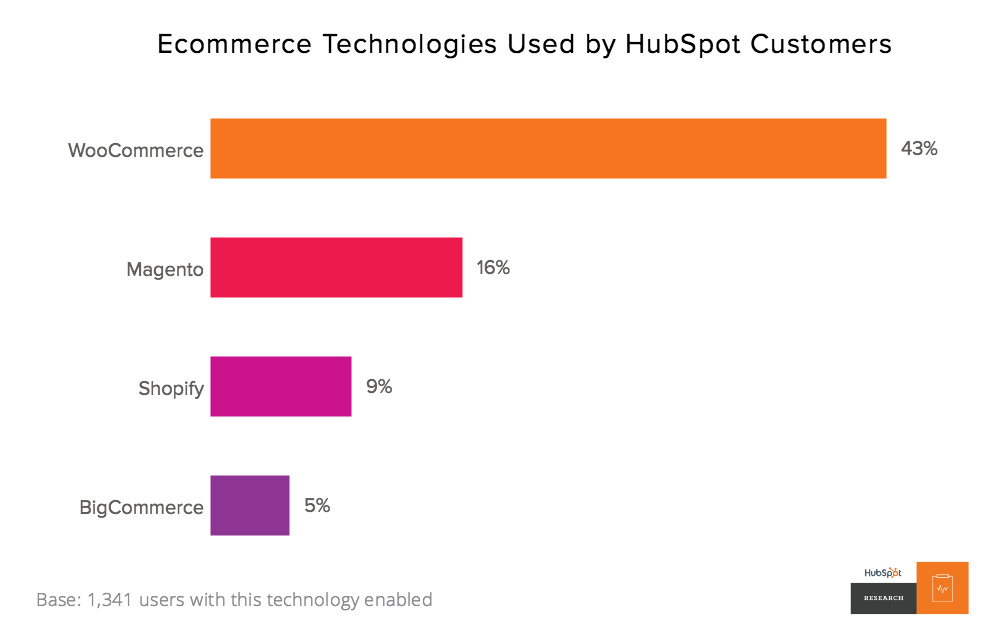
WooCommerce is a leader in the ecommerce category, with 43% market share within our sample.
7) Other Observations Based on Demographics
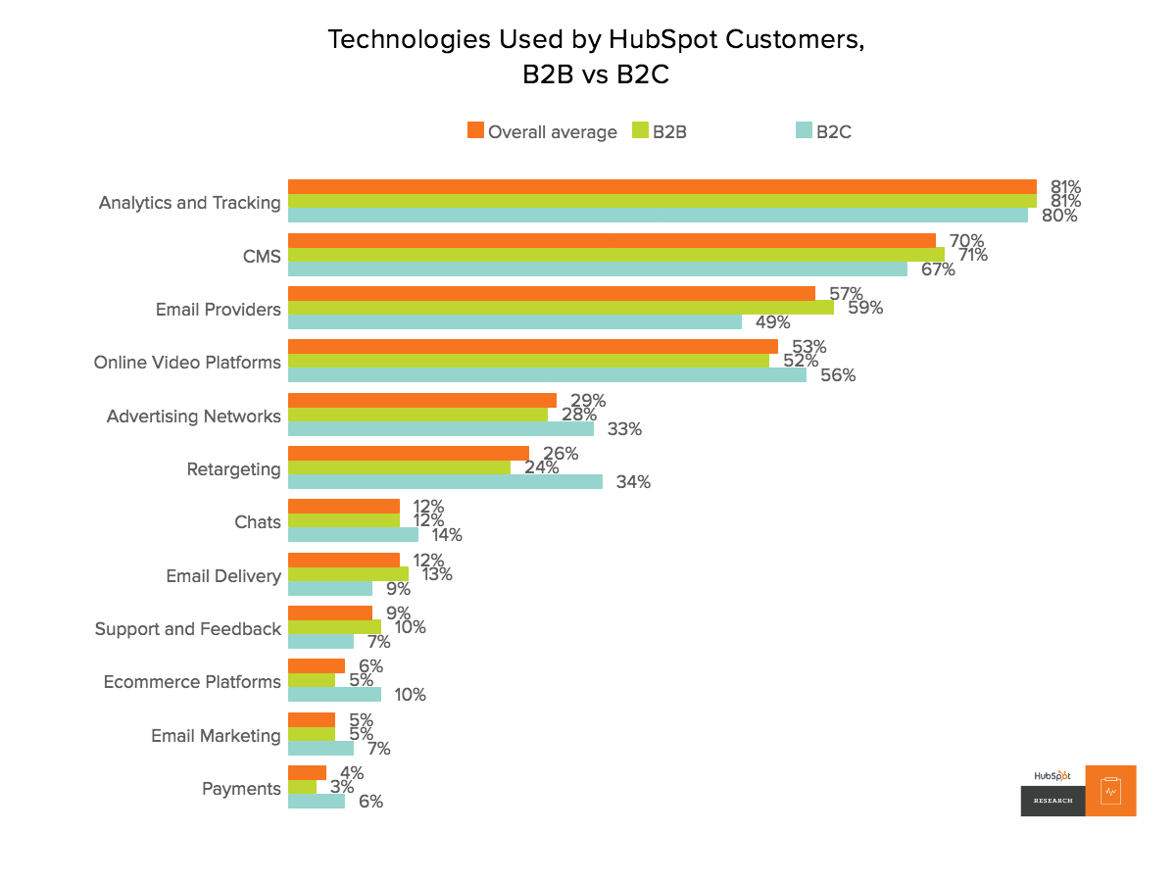
Finally, we crunched the numbers and reviewed technology adoption based on our customer demographics. We found some interesting differences, and plan to follow this research with additional insights from our data set.
In the meantime, check out some of the more interesting figures we discovered:
- 34% of B2C companies use retargeting, compared to 24% of B2B companies -- a 10% difference.
- 44% of larger companies (more than 1,000 employees) use advertising networks, versus 27% of small businesses (1 to 50 employees).
- Our customers in France have the highest use of online video platforms (49%), while Brazil had the lowest (43%).
- Brazilian customers had the highest use of retargeting software (41%). Only 12% of customer in the Netherlands had retargeting enabled.
- Companies in the software industry have the highest use of support and feedback tools (21%).
- ecommerce sites have the highest use of both retargeting tools (50%) and chat software (31%).
- Non-profit and education sites have the highest use of online video platforms (68% and 66%, respectively).
What's in Your Growth Stack?
The technology groupings identified in this data are powerful levers for rapid growth. By examining the use of video, ad networks, retargeting, support, chat, ecommerce, and payments, you might begin to see what a growth stack could look like for your business.
Do you agree? Let us know what your growth stack looks like in the comments.
from HubSpot Marketing Blog https://blog.hubspot.com/marketing/how-hubspot-customers-grow-technologies

No comments:
Post a Comment